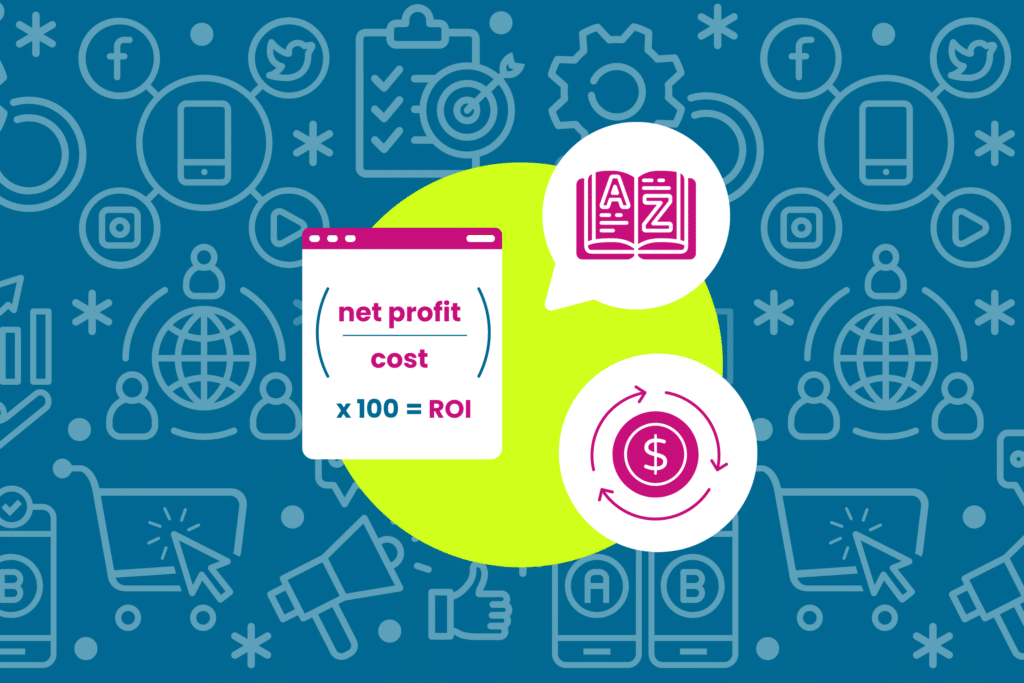A customer needs to see marketing and advertising content from a brand an average of seven times before they make a purchase. How can you ensure that your audience sees your ads continuously (and at the right times in their journey) so they make that purchase? Search remarketing.
Remarketing is a strategy used to reach new shoppers and repeat customers as they move through the various stages of the buyer’s journey. When you remarket, you are opening up your business for new and recurring purchases of your products.
Google has a variety of remarketing ad formats available to you including Search, Shopping, Display, and Video. In this blog, we discuss how to leverage different Google remarketing strategies to influence shoppers to purchase one (or several) of your products. And don’t worry — you won’t have to limit your audience to new customers exclusively. Using historical customer data is often the go-to for remarketing and is one of the easiest ways to help you increase profitability.
- When is search remarketing a good idea?
- Understanding who to remarket
- Google remarketing strategies that boost return
- The Omnitail Difference
- Highly customized Google remarketing ad strategies
When is Search Remarketing a Good Idea?
Imagine you’re an online camera retailer, and a customer purchased a new camera from you two weeks ago. While this camera is a high-dollar item that won’t necessarily need to be replaced immediately, don’t think for a minute that this customer won’t return to shop with you for other camera-related items or accessories.
Remarketing to this customer is the perfect next step because you know what items you can advertise at this stage in their buyer’s journey to keep them engaged and shopping with you (i.e., camera accessories, lenses, or other equipment).
Remarketing is also a good idea when you’re trying to:
- Keep your products top of mind. Remarketing your products soon after a purchase is a great way to keep your products — and brand — at the forefront of customers’ minds.
- Increase conversions. When you remarket, you may experience increased conversions because shoppers have already shown an interest in your products or services. Increased conversion rates mean more sales, which inevitably lead to increasing the profitability of your business.
- Upsell products. Remarketing helps you persuade customers to buy additional products and/or purchase something more expensive from your inventory.
Understanding Who to Remarket
Before you start planning your campaigns, you’ll want to get specific about the type of shopper you want to remarket. This pre-planning will ultimately help boost your engagement and profitability. With the previous customer’s camera purchase in mind, here are a few examples of shopper groups you might consider:
- Repeat customers: People who repeatedly return to your site to buy products from you. This may include customers who visit your site to purchase lenses, camera batteries, and other accessories.
- High-intent shoppers: Shoppers who are searching for a reliable website (or brand) where they can purchase the items they want quickly. This might be someone looking to buy a high-dollar camera immediately.
- Lapsed customers: Those who have purchased from your store before, but haven’t in a while. This may also include loyal customers who buy at specific times (like during the holiday sales season).
In short, one way to make sure you remarket to the right people is to make sure you’re constantly optimizing your strategy.
Google Search Remarketing Strategies that Boost Return
These remarketing strategies may help boost your return:
- Website-based remarketing: There are two ways to remarket shoppers using your website.
- Use a retargeting pixel. When a shopper hits your website, the pixel will cookie their browser and allow you to identify repeat visitors.
- Bonus points if you can also identify repeat visitors who abandon their cart. Try sending them a follow-up email or text message to remind them to complete their purchase, or show them a “Forgot something?” chat bot or modal when they return to your site.
- Use forms.After a shopper submits a form on your website, you can add them to a retargeting list (see more on this below!).
- Use a retargeting pixel. When a shopper hits your website, the pixel will cookie their browser and allow you to identify repeat visitors.
- Retargeting lists: Lists are a great way to remarket existing customers (or repeat website visitors) who’ve provided their email addresses. When you have this list, you can upload their emails into your Google Ads account to tailor ads for them.
- Retargeting audiences: These are used to help you remarket to past customers that have gone five, 10, or 30 days without making a second purchase. You upload an email list of these customers into Google Ads to remarket them with new ads that are appropriate to their stage in the buyer’s journey.
- Remarketing campaigns: You can create a remarketing campaign in your Google Ads account using your retargeting list. Your campaign enables you to specify locations and do much more.
The Omnitail Difference
At Omnitail, we help customers learn how to measure their success through profitability instead of vanity metrics like ROAS. Doing this provides greater accountability, integrity, and transparency around the health of your e-commerce business.
Our experienced team of SEM analysts use our proprietary in-house technology for managing and reporting on your campaigns to help you make the most out of your search ads. As a dedicated e-commerce PPC agency, we take the time to analyze the whole story of your accounts and optimize programs based on what’s best for you and your bottom line.
Highly Customized Google Remarketing Ad Strategies
A well-designed remarketing strategy can do wonders for your business. Let our team at Omnitail lend a hand and help you craft a customized strategy that works for you. We’ll support you — provide the expertise you need to get continuously noticed by customers and assist with increasing your profit. Reach out today and schedule a strategy call to learn how to properly set up your Google remarketing campaigns.








